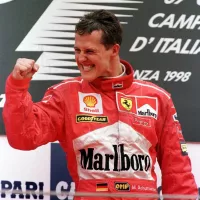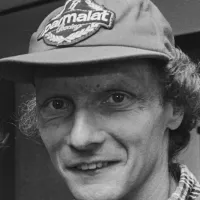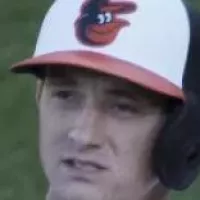The Spanish Grand Prix, held at the Circuit de Barcelona-Catalunya, is a historic Formula One race with a rich history dating back to 1913. After a hiatus due to World War I, it became a fixture in European racing. It was part of prestigious championships, including the World Manufacturers' Championship and the European Championship. The Spanish Civil War interrupted the race again, but it was revived in 1967 and has been a consistent part of the Formula One World Championship since 1968. The race has been hosted at various venues throughout its existence.
1908: First Catalan Cup
The first Catalan Cup, a notable motor racing event in Spain, took place in 1908 around Sitges.
1910: Last Catalan Cup
The Catalan Cup, held annually, concluded in 1910.
1913: Carlos de Salamanca's Victory
Carlos de Salamanca became the first Spanish driver to win the Spanish Grand Prix in 1913.
1913: First Spanish Grand Prix
The first race widely recognized as the Spanish Grand Prix was held in 1913 in Guadarrama.
1923: First Official Spanish Grand Prix
The first race officially titled "Spanish Grand Prix" took place in Sitges in 1923 at the Sitges-Terramar circuit.
1926: Move to Circuito Lasarte
The Spanish Grand Prix relocated to the Circuito Lasarte near Bilbao in 1926.
1927: Part of AIACR World Manufacturers' Championship
The 1927 Spanish Grand Prix was included in the AIACR World Manufacturers' Championship.
1927: Spanish Grand Prix joins World Manufacturers' Championship
The Spanish Grand Prix became part of the AIACR World Manufacturers' Championship in 1927.
1928: Sports Car Regulations
In 1928, the Spanish Grand Prix adopted sports car regulations.
October 1929: Cancellation of 1930 Spanish Grand Prix
The 1930 Spanish Grand Prix for sports cars, planned for July 27th, was cancelled due to economic hardship following the Wall Street Crash in October 1929.
1930: Cancellation due to Economic Hardship
The 1930 Spanish Grand Prix was cancelled due to the challenging economic climate following the Wall Street Crash.
1931: Cancellation of Spanish Grand Prix
The planned Spanish Grand Prix for 1931 was cancelled due to political and economic challenges.
1932: Cancellation of Spanish Grand Prix
The 1932 Spanish Grand Prix faced cancellation because of political and economic difficulties.
1933: Revival at Lasarte
The Spanish Grand Prix was revived at the Lasarte circuit in 1933 with support from the government.
1935: Spanish Civil War Halts Racing
Following the 1935 race, the Spanish Civil War brought motorsport activities to a halt.
1935: Spanish Grand Prix joins European Championship
The Spanish Grand Prix was promoted to the European Championship in 1935.
1951: Juan Manuel Fangio's Triumph
Argentine racing legend Juan Manuel Fangio, who spoke Spanish, emerged victorious at the 1951 Spanish Grand Prix.
1952: Cancellation of Spanish Grand Prix
The planned Spanish Grand Prix for 1952 was cancelled due to financial constraints.
1953: Cancellation of Spanish Grand Prix
Financial difficulties led to the cancellation of the 1953 Spanish Grand Prix.
1954: Mike Hawthorn's Victory
British driver Mike Hawthorn won the Spanish Grand Prix in 1954, driving a Ferrari, breaking Mercedes' dominance.
1955: Cancellation of Spanish Grand Prix
The 1955 Spanish Grand Prix was cancelled due to safety concerns and financial issues following a tragic accident at the 24 Hours of Le Mans.
1967: Non-Championship Grand Prix at Jarama
A non-championship Grand Prix took place at the Jarama circuit in 1967, with Jim Clark emerging victorious.
1967: Revival of the Spanish Grand Prix
After a hiatus due to the Spanish Civil War, the Spanish Grand Prix was successfully revived in 1967.
1968: Jarama Hosts Spanish Grand Prix
Jarama hosted the Spanish Grand Prix in 1968, marking the beginning of the alternating schedule between Jarama and Montjuïc.
1968: Spanish Grand Prix joins Formula One World Championship
The Spanish Grand Prix became a regular part of the Formula One World Championship in 1968.
1969: First Formula One Race at Montjuïc
The Montjuïc circuit in Barcelona held its inaugural Formula One race in 1969, with Jackie Stewart securing the victory.
1970: Fiery Accident at Spanish Grand Prix
The 1970 Spanish Grand Prix witnessed a fiery accident involving drivers Jacky Ickx and Jackie Oliver, who fortunately escaped with burns.
1974: Niki Lauda's First Victory
Austrian driver Niki Lauda achieved his first Formula One victory at the 1974 Spanish Grand Prix.
1975: Tragedy at Montjuïc
The 1975 Spanish Grand Prix at Montjuïc was marred by a tragic accident that claimed the lives of four spectators after Rolf Stommelen's car crashed due to a rear wing failure, leading to concerns about the circuit's safety.
1976: James Hunt's Controversial Victory
James Hunt emerged victorious in the 1976 Spanish Grand Prix after Niki Lauda suffered injuries in a tractor accident, but Hunt was later disqualified due to a technical infringement before having his victory reinstated after a successful appeal.
1977: Mario Andretti's Domination
Mario Andretti, driving a Lotus 78, dominated the 1977 Spanish Grand Prix.
1978: Mario Andretti's Continued Dominance
Mario Andretti continued his dominance at the Spanish Grand Prix in 1978.
1980: Boycott by Factory Teams
The 1980 Spanish Grand Prix faced a boycott by factory teams (Ferrari, Renault, and Alfa Romeo) after FISA president Jean-Marie Balestre declared it a non-championship race, resulting in only independent constructors participating.
1981: Gilles Villeneuve's Memorable Victory
Gilles Villeneuve, driving a challenging Ferrari, secured a remarkable victory at the 1981 Spanish Grand Prix, considered one of the greatest drives in motorsport history.
1982: Cancellation and Removal from Calendar
The 1982 Spanish Grand Prix was cancelled due to various factors, including organizers' focus on a nearby golf course, the circuit's limitations, and unfavorable race conditions, leading to its removal from the racing calendar.
1982: Cancellation of the Spanish Grand Prix
The Spanish Grand Prix was cancelled from 1982 to 1985.
1984: Failed Attempt to Revive Spanish Grand Prix in Fuengirola
In 1984, an attempt to revive the Spanish Grand Prix on a street circuit in the resort town of Fuengirola was unsuccessful.
1985: Commissioning of Circuito Permanente de Jerez
In 1985, the Mayor of Jerez commissioned the construction of a new racing circuit, the Circuito Permanente de Jerez, to promote tourism and the region's sherry production.
1985: End of Cancellation
The cancellation of the Spanish Grand Prix ended in 1985.
1986: Return to the Calendar
After a three-year hiatus, the Spanish Grand Prix returned to the Formula One calendar in 1986.
1986: First Spanish Grand Prix at Jerez
The first Spanish Grand Prix at the Circuito Permanente de Jerez took place in 1986, featuring a close battle between Ayrton Senna and Nigel Mansell, with Senna winning by a mere 0.014 seconds.
1987: Mansell's Victory at Jerez
Nigel Mansell emerged victorious in the 1987 Spanish Grand Prix at Jerez, driving for the Williams team.
1989: Senna's Dominant Performance at Jerez
Ayrton Senna showcased a strong performance in the 1989 Spanish Grand Prix at Jerez, securing a victory and maintaining his position in the championship standings.
1990: Last Spanish Grand Prix at Jerez and Donnelly's Career-Ending Crash
The 1990 Spanish Grand Prix marked the last time the race was held at Jerez. During practice, Martin Donnelly suffered a severe crash, ending his Formula One career. Despite the circuit's popularity among drivers, its remote location and the severity of Donnelly's accident tarnished its reputation.
1991: Spanish Grand Prix Moves to Circuit de Barcelona-Catalunya
The Spanish Grand Prix relocated to the newly constructed Circuit de Barcelona-Catalunya in Montmeló in 1991, marking the beginning of its tenure at this venue.
1992: Grand Prix of the Olympic Games
The 1992 Spanish Grand Prix was promoted as the "Grand Prix of the Olympic Games," coinciding with the Summer Olympics held in Barcelona.
1994: End of Williams' Dominance
The 1994 Spanish Grand Prix marked the end of the Williams team's winning streak at the Circuit de Barcelona-Catalunya, which they had dominated since its inauguration.
1996: Schumacher's First Ferrari Victory
Michael Schumacher achieved his first victory for Ferrari at the 1996 Spanish Grand Prix, triumphing in challenging wet weather conditions.
2001: Pole Position Dominance
Between 2001 and 2019, the Spanish Grand Prix at Circuit de Barcelona-Catalunya was predominantly won from pole position, highlighting the track's characteristics and the importance of qualifying.
2001: Häkkinen's Late Retirement
Mika Häkkinen was on track for a potential fourth-place finish at the 2001 Spanish Grand Prix before his car experienced a mechanical failure on the final lap.
2003: Alonso's Rise and Increased Attendance
Fernando Alonso's success in Formula One, including his second-place finish at the 2003 Spanish Grand Prix, contributed to a surge in attendance at the race.
2005: Alonso's Continued Success
Fernando Alonso continued his strong performances at the Spanish Grand Prix in 2005, securing another second-place finish.
2006: Alonso's Home Victory
Fernando Alonso claimed a memorable victory at the 2006 Spanish Grand Prix, starting from pole position and winning in front of his home crowd.
2007: Alonso's Podium Finish
Fernando Alonso achieved a podium finish at the 2007 Spanish Grand Prix, finishing in third place.
2010: Alonso's Second-Place Finish
Fernando Alonso secured another second-place finish at the 2010 Spanish Grand Prix, demonstrating his consistency at his home race.
2012: Maldonado's Historic Win for Williams
Pastor Maldonado made history at the 2012 Spanish Grand Prix by becoming the first Venezuelan driver to win a Formula One race. His victory also marked Williams' first win since the 2004 Brazilian Grand Prix and their first at the Spanish Grand Prix since 1997.
2013: Alonso's Second Spanish Grand Prix Victory
Fernando Alonso achieved his second victory at the Spanish Grand Prix in 2013, further solidifying his status as a national hero.
2013: Centenary of the Spanish Grand Prix
The Spanish Grand Prix celebrated its 100th anniversary in 2013.
2020: Race Postponement Due to COVID-19 Pandemic
The 2020 Spanish Grand Prix was postponed from its original May date to August due to the global COVID-19 pandemic.
2021: Hamilton's Strategic Victory
Lewis Hamilton secured victory at the 2021 Spanish Grand Prix, overtaking Max Verstappen after a strategic additional pit stop.
2023: Circuit Layout Change
The Circuit de Barcelona-Catalunya underwent a layout modification in 2023, adopting the configuration previously used by MotoGP since 2021.
2025: Madrid Initially Proposed as Future Host
Madrid, the capital of Spain, was initially put forward as a potential host for a Formula One race starting in 2025, with a planned street circuit around the IFEMA Palacio Municipal.
2026: Move to New Circuit
The Spanish Grand Prix is scheduled to move to a new circuit near Madrid from 2026.
2026: Madrid Grand Prix Debut Pushed Back
The proposed Formula One race in Madrid was postponed to 2026, delaying the debut of the event in the Spanish capital.
2035: Race Extension
The agreement to race at the new circuit near Madrid extends until at least 2035.
Mentioned in this timeline

Michael Schumacher is a retired German Formula One racing driver...

Max Verstappen is a highly successful Dutch-Belgian Formula One driver...

Lewis Hamilton is a British Formula One racing driver currently...

Niki Lauda was an Austrian Formula One driver and aviation...

Barcelona is a major city located on the northeastern coast...

A car also known as an automobile is a wheeled...
Trending
8 months ago Maldives bans Israelis in solidarity with Palestinians amid Gaza conflict escalation.

3 months ago Brock Bowers' Injury Concerns: Raiders' Crosby Also Added to Injury Report

2 months ago Edison Upgrades South Pasadena Electrical Grid Amidst Storm Recovery, Lifting Evacuation Orders

John Stamos is an American actor and musician who rose to fame as Blackie Parrish on General Hospital earning a...

8 months ago Austin Hays emerges as a top Fantasy Baseball Waiver Wire pickup.

1 month ago Maxxine Dupri, assisted by AJ Lee, dethrones Becky Lynch for Intercontinental Title on Raw!
Popular

Tucker Carlson is an American conservative political commentator known for...

XXXTentacion born Jahseh Dwayne Ricardo Onfroy was a controversial yet...

Ben Shapiro is a prominent American conservative political commentator media...

Candace Owens is an American conservative political commentator and author...

William Franklin Graham III commonly known as Franklin Graham is...

Ursula Gertrud von der Leyen is a prominent German politician...